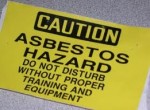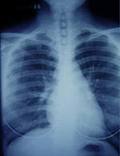 Women are much less likely than men to be diagnosed with mesothelioma cancer – an approximate four-to-one ratio – but there is little to suggest a gender-based defense or susceptibility. The discrepancy centers more on blue-collar occupations and workplaces that have been dominated traditionally by males.
Women are much less likely than men to be diagnosed with mesothelioma cancer – an approximate four-to-one ratio – but there is little to suggest a gender-based defense or susceptibility. The discrepancy centers more on blue-collar occupations and workplaces that have been dominated traditionally by males.
Mesothelioma is a rare cancer caused by exposure to asbestos, a naturally occurring mineral that played a major role in the building of America throughout much the 20th century. Although the use of asbestos has dropped dramatically in recent decades – by comparison very little is actually used in America today – the risk of exposure lingers from all that remains in the buildings and the products left behind.
There also is the lengthy latency period (10 to 60 years) between exposure to asbestos and symptoms that can be diagnosed. An estimated 3,000 cases of mesothelioma are diagnosed annually in the United States. The average life expectancy for a patient is only one year, but of course this can fluctuate because of a patient’s age, race, gender and a number of other demographics.
“People still are getting sick from being exposed to asbestos,” said Ken Rosenmen, M.D. Division of Occupational and Environmental Medicine chief at Michigan State University. “Asbestos was once a useful product – and that’s why it was used so much – but we’re still paying the price for that.”
Michigan State University has been tracking mesothelioma cases throughout the state since 1985, reporting that only 25 percent of the cases involved women, which is comparable to trends throughout the country. The United States Centers of Disease Control (CDC) tracked 18,083 mesothelioma deaths during a recent six-year period and found that 19 percent (3,485) of cases occurred in women.
One study from Turkey determined that 160 women and only 115 men – from a pool of 100,000 exposed people – were at risk for mesothelioma cancer.
More definitive, though, is the type of mesothelioma that varied from men to women. Among the men, 90.2 percent of cases were pleural mesothelioma (forming in the lungs), 8.3 percent were peritoneal mesothelioma (abdomen), and 1.1 percent was from other regions. Among the women, 71.1 percent of cases were pleural, 24.3 percent were peritoneal, and 3.1 percent were from other regions.
Mesothelioma for both men and women is generally difficult and slow to diagnose because symptoms often mirror those of less serious illnesses. Although millions of people year after year are exposed to asbestos in either the home or the workplace, only a small percentage develops mesothelioma.
There are stories about mesothelioma survivors, both men and women, with either pleural or peritoneal mesothelioma on the Wall of Hope section at Asbestos.com. Regardless of sex, both men and women can survive much longer with mesothelioma cancer than in the past thanks to innovative treatments.
Guest Author Tim Povtak has been a writer for Asbestos.com since 2011. Prior to joining Asbestos.com, he was an award-winning newspaper journalist.

 Mesothelioma is typically regarded as a men’s cancer. The primary cause – occupational asbestos exposure – was the biggest threat in male-dominated industries, such as mining, construction and factory work. During the early and mid-20th century, when
Mesothelioma is typically regarded as a men’s cancer. The primary cause – occupational asbestos exposure – was the biggest threat in male-dominated industries, such as mining, construction and factory work. During the early and mid-20th century, when